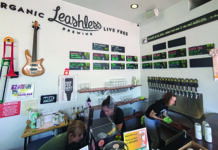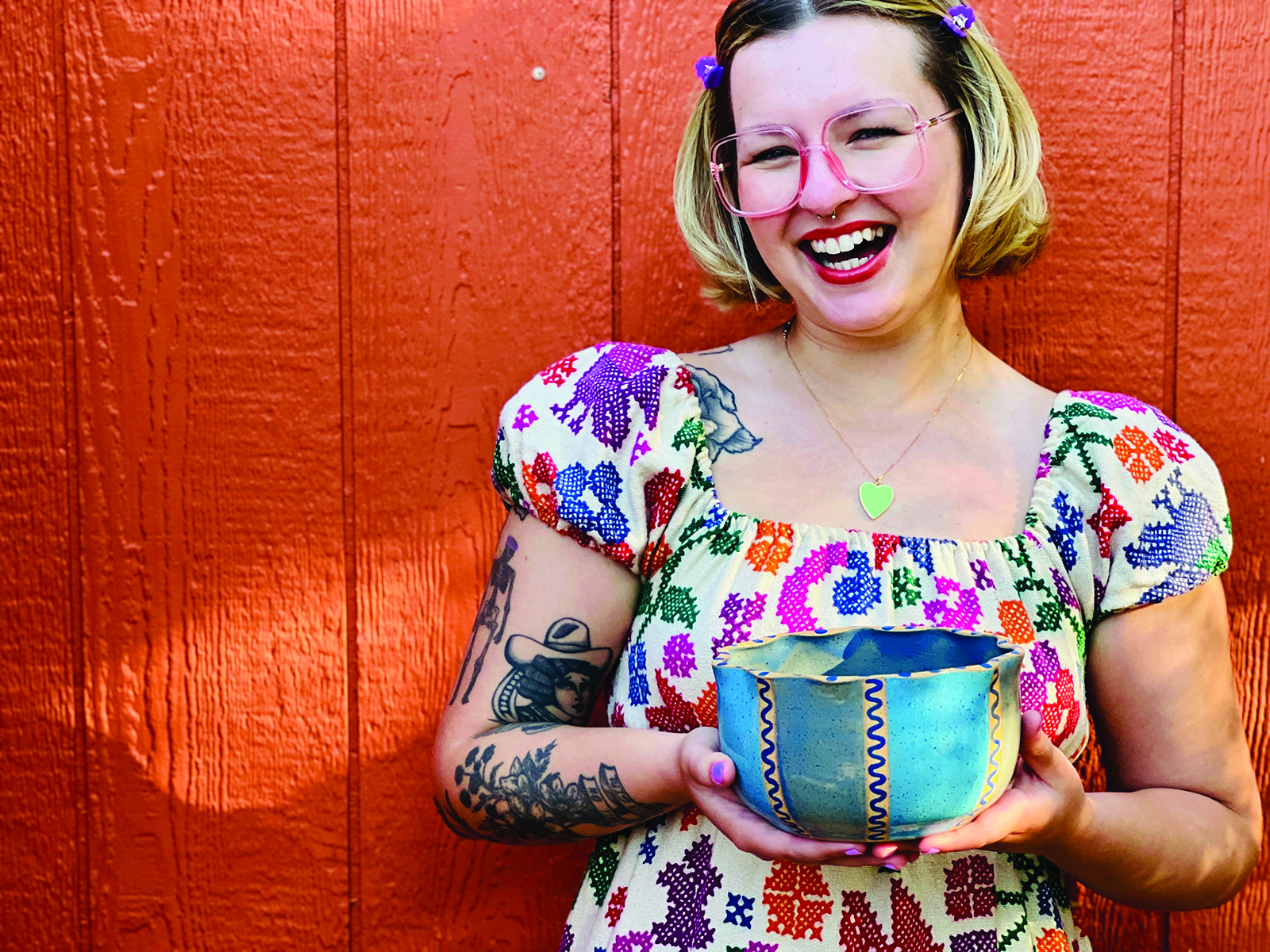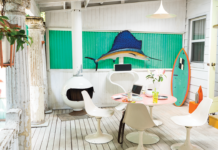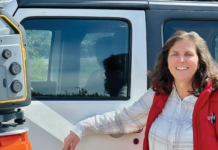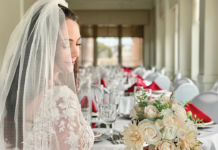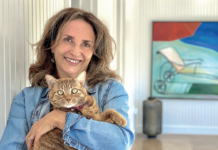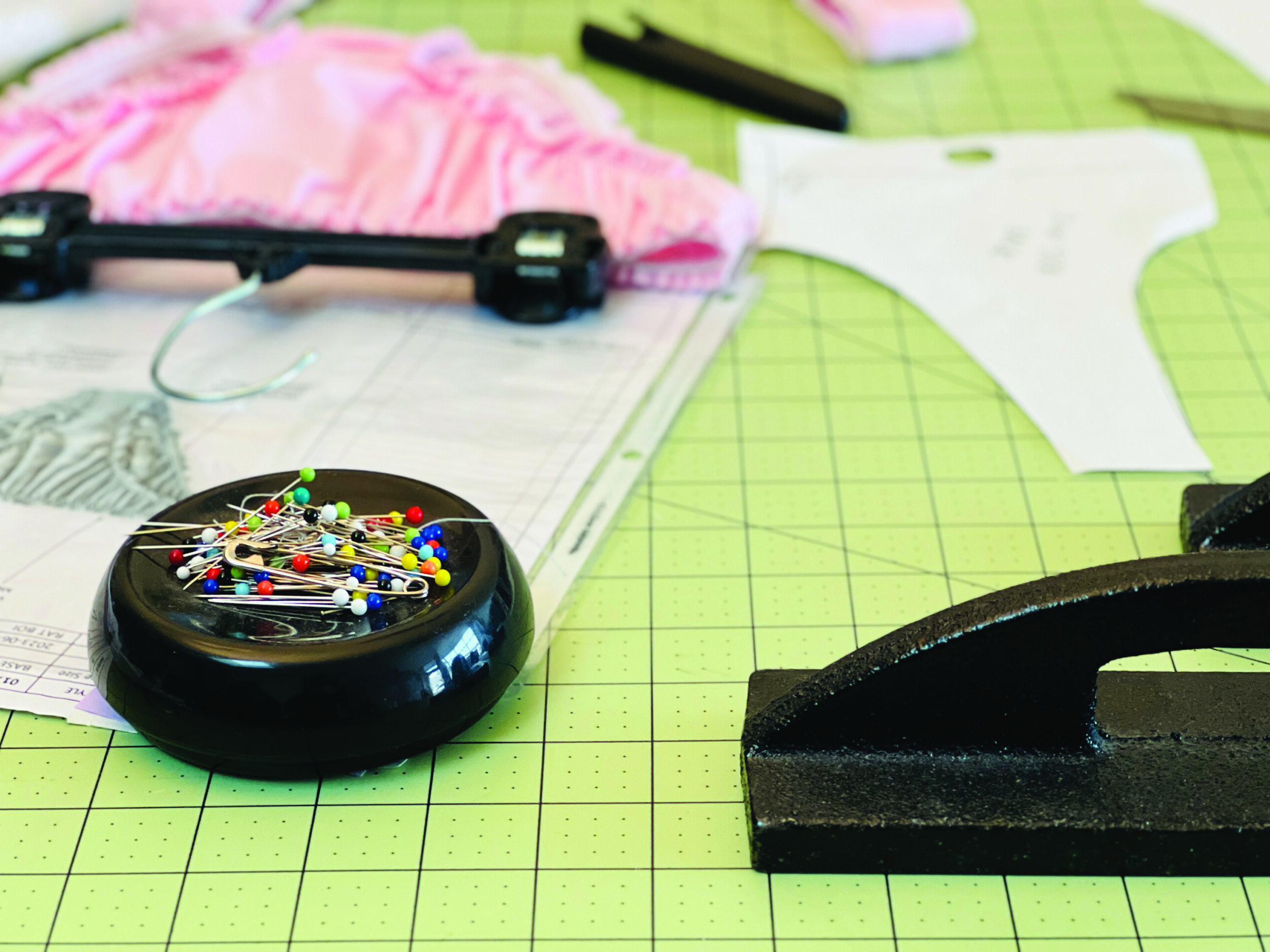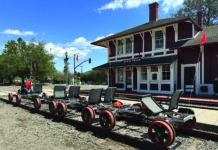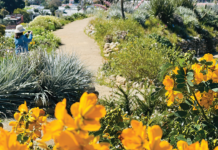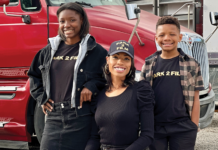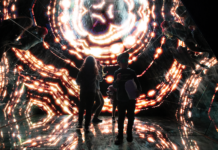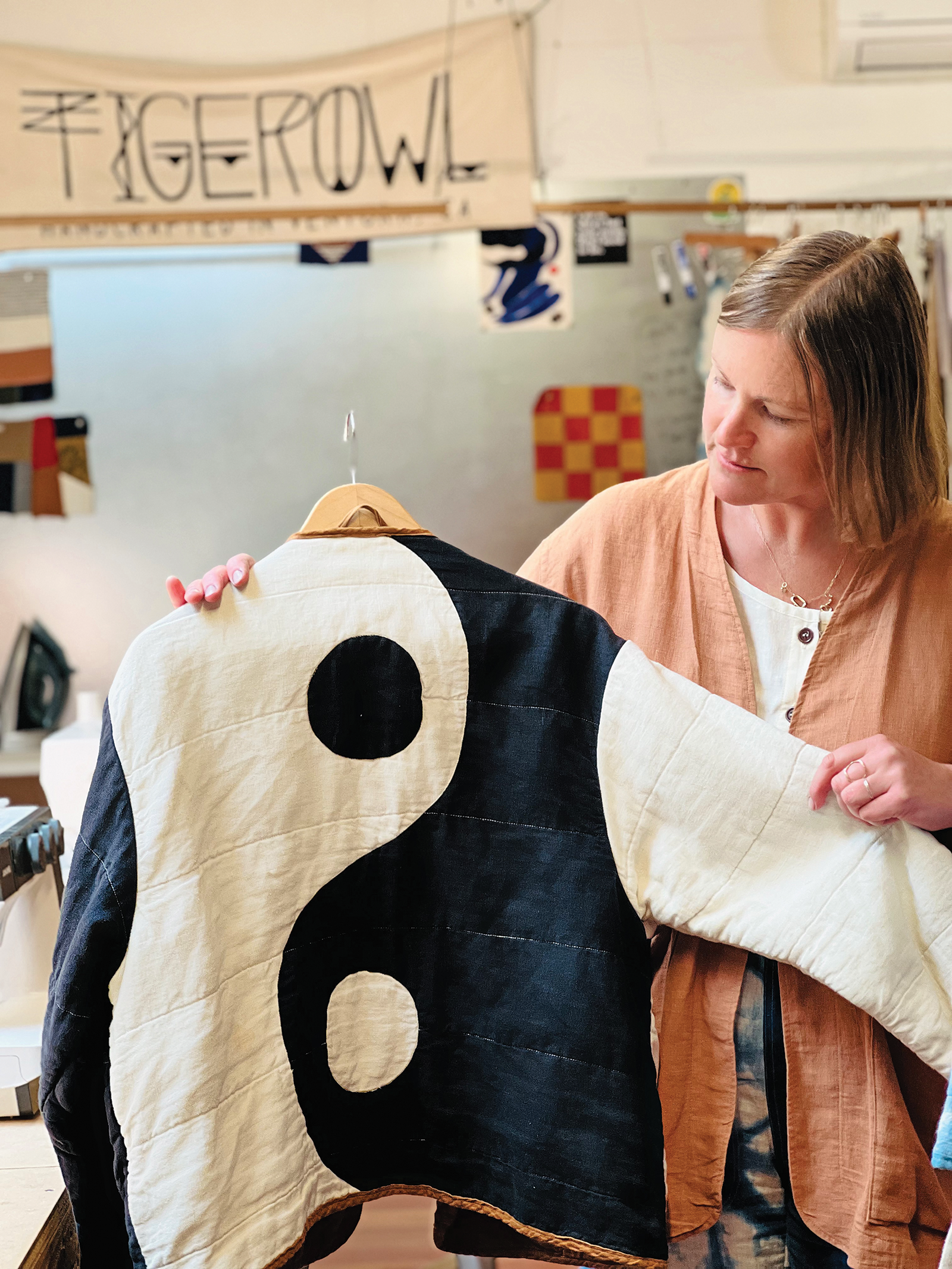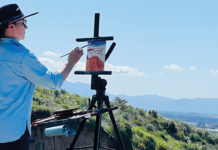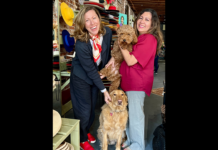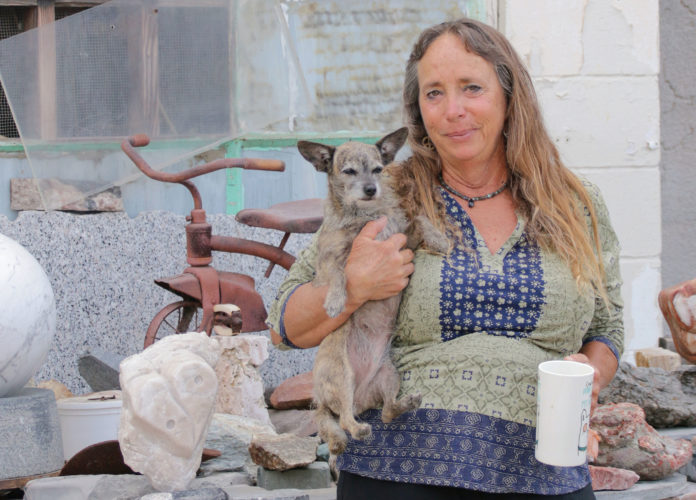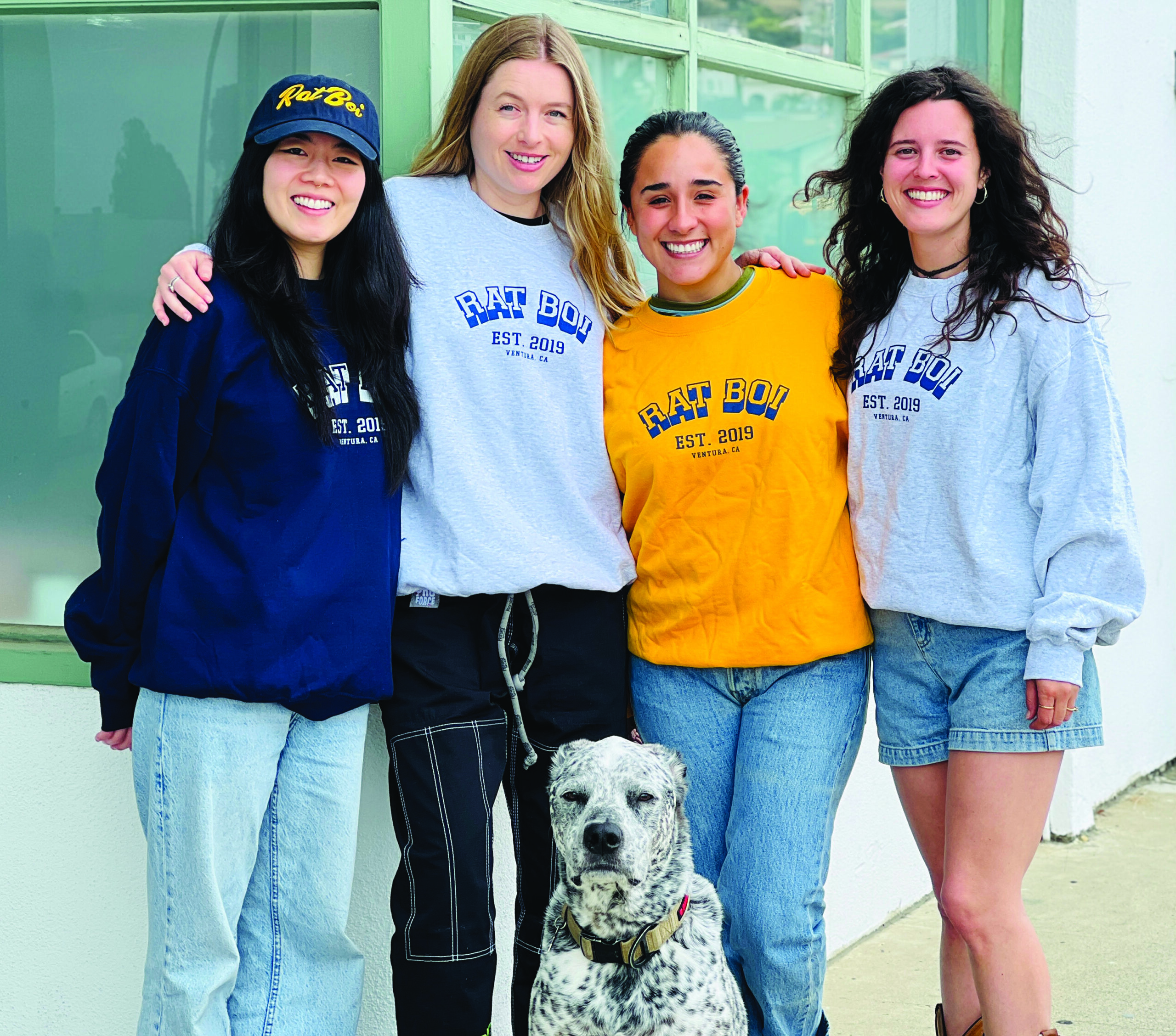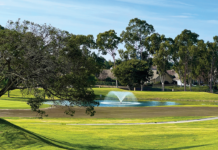The hard rock art of Michele Chapin
By Emily Dodi, Photos by Cecilia Ortiz
It’s a mind blow,” sculptor Michele Chapin says as she gives a tour of Stoneworks Studio and Gallery, her workspace in Ventura. She’s holding one of her sculptures, made from an ancient rock. “This is what sand looks like when it’s fossilized,” she adds, pointing out the tiny details in the rock. She moves on to a piece made of marble and then to one made from granite. So many beautiful sculptures, each one made from a different kind of stone. “They’ve all got a little story behind them,” she says.
Chapin has been sculpting in rock since the 1980s, and the fascination they hold is just as strong now as it’s ever been.
“I love rocks. And the color of them. The textures. To actually be able to touch the piece is so important to me because the entire piece is made
from touch.”
She says this after I stop myself from reaching out to touch one of the sculptures. With their smooth, colorful lines, it’s impossible not to want to touch them, but the instinct to keep our hands off of art is ingrained in us. Works of art are usually kept at a distance, guarded from curious hands. But this is not that kind of art. And Chapin is a special kind of artist. She wants you to touch her work.
It’s been her plan all along.
“I’ve liked rocks since I was a kid and I never even thought about carving them. I always wanted to be a sculptor and when I was 30 I went to an art show in L.A. and there was a guy from Holland carving stone. I was so
blown away.”
The experience made such an impact that she traveled to Holland and visited the artist in his studio. “He showed me what he did and it was like, ‘That’s it. This is what I’m going to do. I’m going to go home and I’m going to become a sculptor.’”
During that same trip, Chapin visited a museum where she noticed that everyone was touching the sculptures and no one was telling them to stop. She soon realized that the visitors were blind and they were being allowed to appreciate the art in a meaningful way. “I decided I was going to come back here and become a sculptor and I was always going to let people touch
my work.”
Even before Chapin went to Holland, the stage had been set for her to sculpt in stone. She was studying at University of California, Santa Cruz, when a professor said she’d never be an artist and he told her to draw 100 roses over the summer. “I hate to draw,” she says. (To this day, she doesn’t sketch out ideas before she begins to carve.) Chapin dropped out and moved to San Francisco before coming home to Ventura, where she continued to sculpt in clay. It was when she started taking art classes at Moorpark College that her future in stone really began to take shape.
She was at Art City Sculpture Supply looking for plaster to make a mold to sculpt from when owner Paul Lindhard suggested that she buy a piece of alabaster instead. After all, plaster is made up of ground-up alabaster, he told her. “So he sold me a rock and then I went to Holland,” she recalls. When she returned home she carved a sculpture from that piece of alabaster. “It was the first piece I ever completed.” Chapin gave it to her parents and it now sits in her studio.
At the time, she says, “I had no idea what I was doing because I was used to working in clay where you can add and subtract.” But rock is different. “You take it away, that’s the way it goes and it’s gone-zo.”
Chapin was undeterred.
“I started carving and I never looked back.” Within a year-and a-half she had a one-woman show. “I found what I was supposed to do.”
Thirty years later, Chapin’s sculptures can be found in galleries, design homes, private collections and public spaces. Perhaps her most well-known work is the large floating ball fountain on Science Drive in Moorpark. “To my knowledge I was the first person in this country to make balls spin with water.” With a base weighing 18,000 pounds and a ball tipping the scales at 1,500 pounds, it’s also the largest piece she’s ever done. These days, she mostly sculpts pieces that can fit easily in someone’s home — or in their hands, like the popular sculpted hearts she creates.
Chapin’s routine has remained largely unchanged. The morning starts with a strong cup of coffee and then it’s time to crank the tunes and rev up the tools. While some sculptors opt for the traditional hammer-and-chisel method, Chapin uses motorized tools, many of which she adapted to suit her needs.
After choosing a rock to work with she “roughs the whole piece out” with an air chisel. She refines the piece with a motorized file then sands it by hand, using various grades of sandpaper. “It gets really smooth … and you can start seeing all the color.”
Sometimes the unexpected happens, but Chapin takes it in stride. “I was doing the last sanding on a piece that I had sold for $10,000 and it cracked in half. It happens. It’s a rock! So you can’t really be attached to things.”
Chapin adds that some of the most beautiful pieces she’s made have been salvaged from something broken. “You have to be able to wing it,” she says. “That’s the nature of the beast. As an artist you live in solution. That’s how I live my life.”
It is profound advice, whether you’re talking about art or life. You put your heart and soul into it. You work hard and stay true to yourself. Sometimes it works out as planned. Sometimes it breaks, but you move on. You keep going and, in the end, it’s a thing of beauty.



